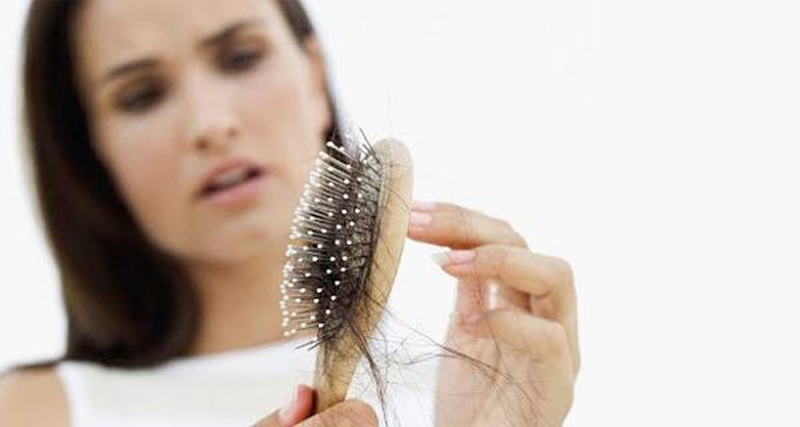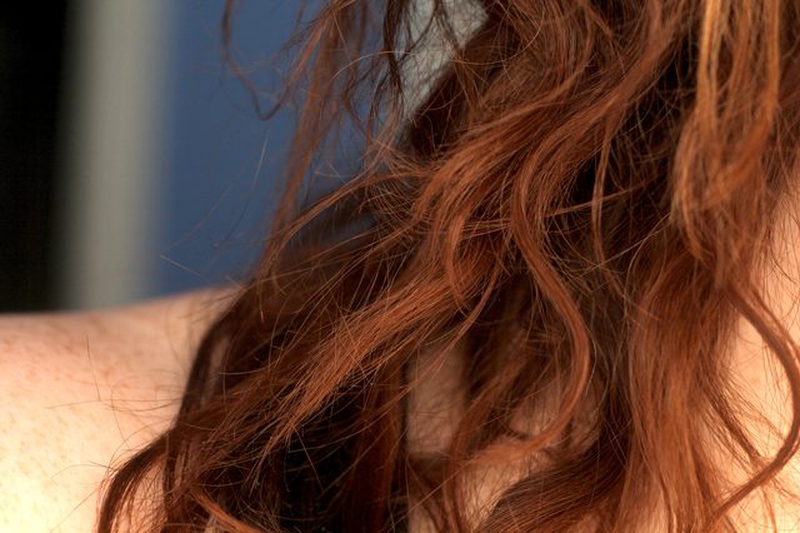While men are more likely to lose hair compared to women, it is not unlikely for women’s hair to thin out and fall off. This can be due to a variety of reasons, ranging from simple ones such as vitamin deficiency to complicated ones such as a health condition. While there are many ways to deal with hair loss for both sexes, it all depends on what the underlying cause is. Here, we list 10 common reasons for hair loss in women.

Childbirth
During childbirth, the pregnant women produce hormones that stimulate hair growth, and as such, during the period, the mother acquires thick and luscious hair. This hair is then lost or shed after she gives birth when hormone levels drop and can no longer support the degree of growth the mother enjoyed during pregnancy.
Protein deficiency
When you don’t take in enough protein in your diet, which is used by the body to create new hair cells, you deprive the body of much-needed building blocks to grow new hair with.
Changes in birth control
Getting rid of hormone-based birth control methods or shifting to a different kind of contraception often causes hormone induced shedding. The body reacts to the change, whether you are starting on new brand, or new method, or stopping its use, the body may react to the change by causing increased shedding and hair loss in women.
Medications and Treatments
Some medications’ side effects include hair shedding. This effect is commonly seen in hypertensive medications, antidepressants, and HIV medications. Whenever you start new medications, and you notice an increase in hair loss, consult your prescribing doctor about it.
Dandruff
Inflammation and itchiness of the scalp due to dandruff can cause you to scratch your head more than the usual and this can hasten the shedding. This condition is easily treated. Treatment requires consistent use of shampoo and conditioner with zinc pyrithione. You may also consult a dermatologist if needed.
Intense emotional and physical stress
When you are under a lot of stress or is going through an intense emotional event in life, your body may halt functions that support your hair’s health, and reallocate them to areas necessary for you to deal with your current stressors. Once these stressors have been dealt with, the body goes back to its normal state, and resumes hair growth, wherein the old hair may be pushed out.
Autoimmune diseases
Autoimmune condition is a disease wherein the body produces antibodies, defenses normally functions and targets the body’s normal and healthy cells, including that of the hair follicles. Alopecia areata is one such condition. Other conditions such as lupus, rheumatoid arthritis, thyroid disease, and certain anemias can also lead to hair loss in women.
Tight hairstyles
Tight hairstyles may cause traction alopecia. The physical stress of tight braids and ponytails cause progressive thinning of the hairline and when these hairstyles are worn for a long time, the hair loss may become permanent. This kind of hair loss is due to the scarring process on the hair follicle.
Heat-styling of the hair
Trichorrhexis nodosa is a condition where damaged, weak points in the hair shaft break off, leading to hair loss. This is often caused by thermal damage to the hair from the use of hot hair styling tools and over-bleaching. The hair loss is often not from the roots.
Over-processing of hair
Hairstyling that utilizes harsh chemicals on the scalp and hair, when done frequently, can lead to damage to the hair follicles and eventual permanent hair loss. Hair follicles don’t grow back after repeated exposure, leading to the thinning of hair and hair loss in women.
What Can You Do for Hair Loss?
Creams and ointments
Minoxidil is a drug originally intended for blood pressure control. This drug dilates blood vessels, promoting the flow to hair follicles and hair growth, and preventing hair loss. This comes in the form of a cream that is applied to areas where hair growth is desired.
Medications
Dihydrotestosterone (DHT) is one of the culprits implicated in hair loss. This hormone is a derivative of the male hormone testosterone. It goes into the hair follicles and causes damage. Finasteride is prescribed to counter this by reducing DHT. Women who are of childbearing age are advised against taking this drug.
Laser Combs and Devices
Laser combs started in 2007, followed thereafter by laser caps, helmets, and brushes. Prices range from $300 to $700. A study in the use of the laser comb found that those who used a laser comb at least three times a week for 26 weeks observed their hair to thicken after.
Platelet-rich plasma therapy (PRP)
In 2008, this has started to gain popularity among younger women who has pattern hair loss, can’t take pills and are not good candidates for transplantation surgery.


View All Comments /Add Comment